Where in central New Mexico are the most suitable locations for a raptor rehabilitation center that balance access, ecological appropriateness, and minimal disturbance?
This project focused on a six-county region broadly representative of central New Mexico: Bernalillo, Valencia, Sandoval, Torrance, Santa Fe, and Socorro counties. The area includes a mix of urban and rural landscapes, transportation corridors, and diverse ecological zones.
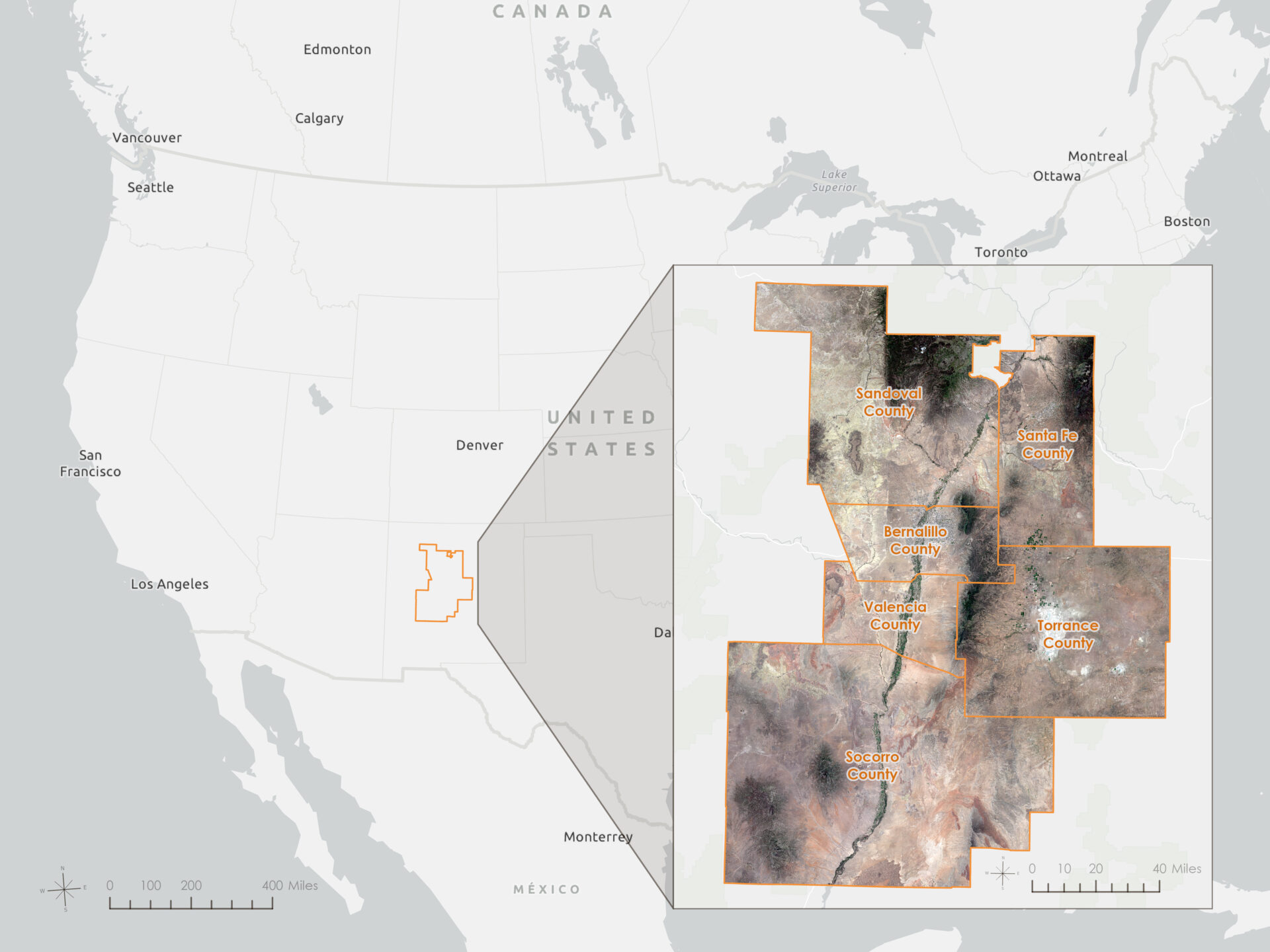
Several organizations across New Mexico are actively involved in rescuing and rehabilitating injured raptors, operating with deep expertise and strong ecological commitment, including: New Mexico Wildlife Center (Española), Wildlife Rescue of New Mexico (Albuquerque), Hawks Aloft (Albuquerque), and Desert Willow Wildlife Rehabilitation Center (Carlsbad). These efforts are supported by a network of researchers, surveyors, and trained volunteers working in diverse settings.

These organizations perform essential work, but the availability of purpose-built facilities remains limited. This project explored the potential for establishing a centralized rehabilitation center in central New Mexico — one designed specifically to support these existing organizations in their efforts toward long-term recovery and release.
Ideally, the facility would include clinical treatment space, quarantine and isolation areas, and infrastructure for physical conditioning and flight training to better prepare raptors for return to the wild.
Criteria and data sources
Selecting an appropriate location for a raptor rehabilitation center required balancing ecological sensitivity, operational access, and minimal human disturbance. To support these goals, five primary criteria were identified and used to build the suitability model.
| Criterion | Purpose | Data source |
|---|---|---|
| Minimal slope | Ensure level terrain for construction and site access | USGS 3DEP 10m National Map Seamless |
| Open habitat areas | Avoid developed areas, water, and disturbance to forested land | USA NLCD Land Cover |
| Proximity to road network | Ensure access for staff, volunteers, and transport logistics | TIGER roads |
| Distance from urban areas | Minimize noise, disturbance, and potential human conflict | TIGER urban areas |
| Proximity to protected areas | Align with conservation priorities and known wildlife corridors | PAD-US Protection Status by GAP Status Code |
For a comprehensive rehabilitation center with the capacity for medical care, species-specific enclosures, physical therapy, and flight training, larger sites were preferred. A minimum threshold of 20 acres was used to prioritize locations with enough space for current needs as well as future expansion or educational programming.
Model workflow
The following steps were used to develop the suitability model based on the chosen criteria:
- Locate areas with the highest overall suitability scores
- Identify appropriate criteria and data sources
- Import, clip, and project data to common coordinate system
- Extract and standardize the criteria to a common scale
- Weight and combine the criteria into a suitability layer

Prepare and derive data
After selecting the six counties in central New Mexico as the study area, core datasets were clipped, projected, and transformed to a common resolution (30 meters) and projected coordinate system (NAD 1983 UTM Zone 13N).
To satisfy the five criteria, intermediary rasters were derived to represent:
- Slope
- Land cover
- Distance to roads
- Distance from urban areas
- Proximity to protected areas

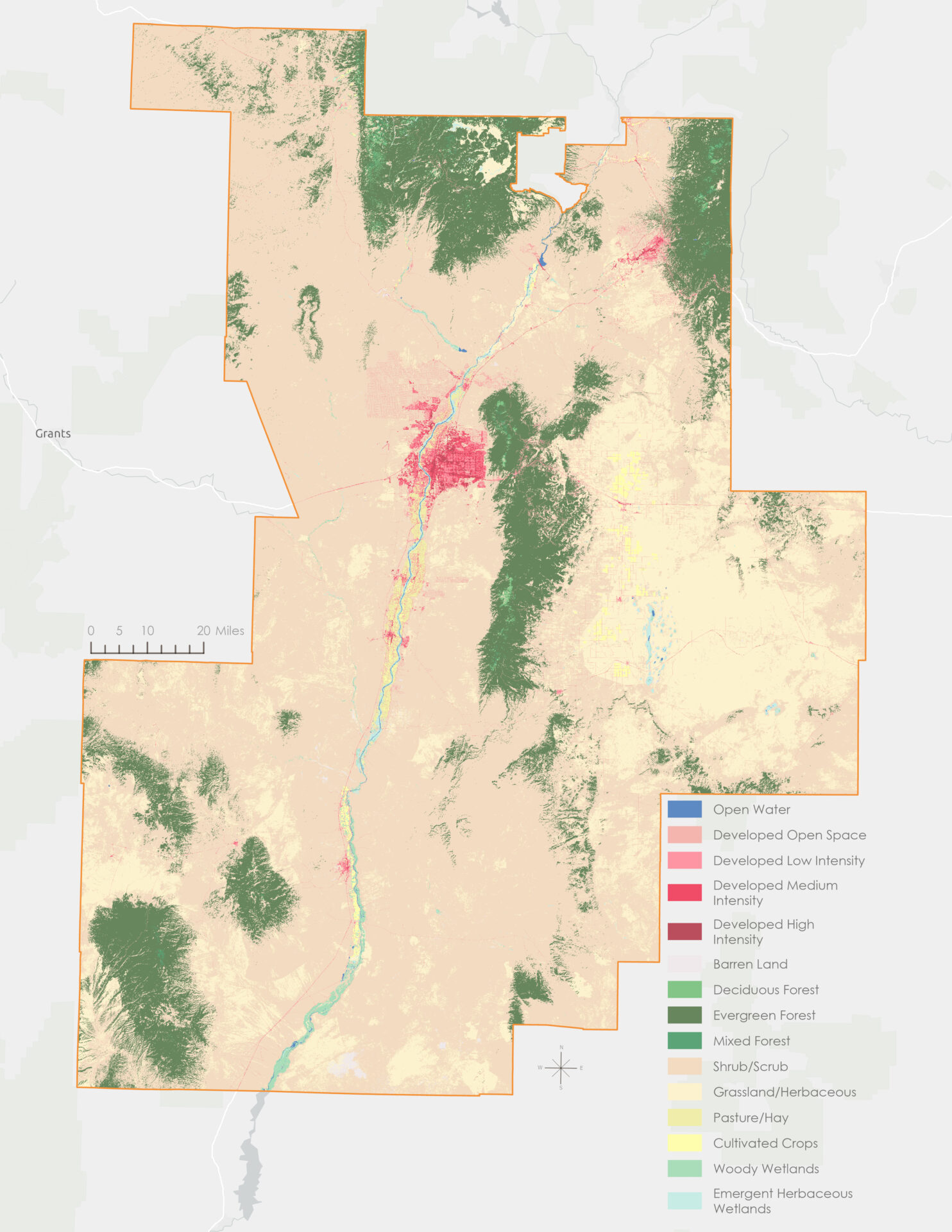
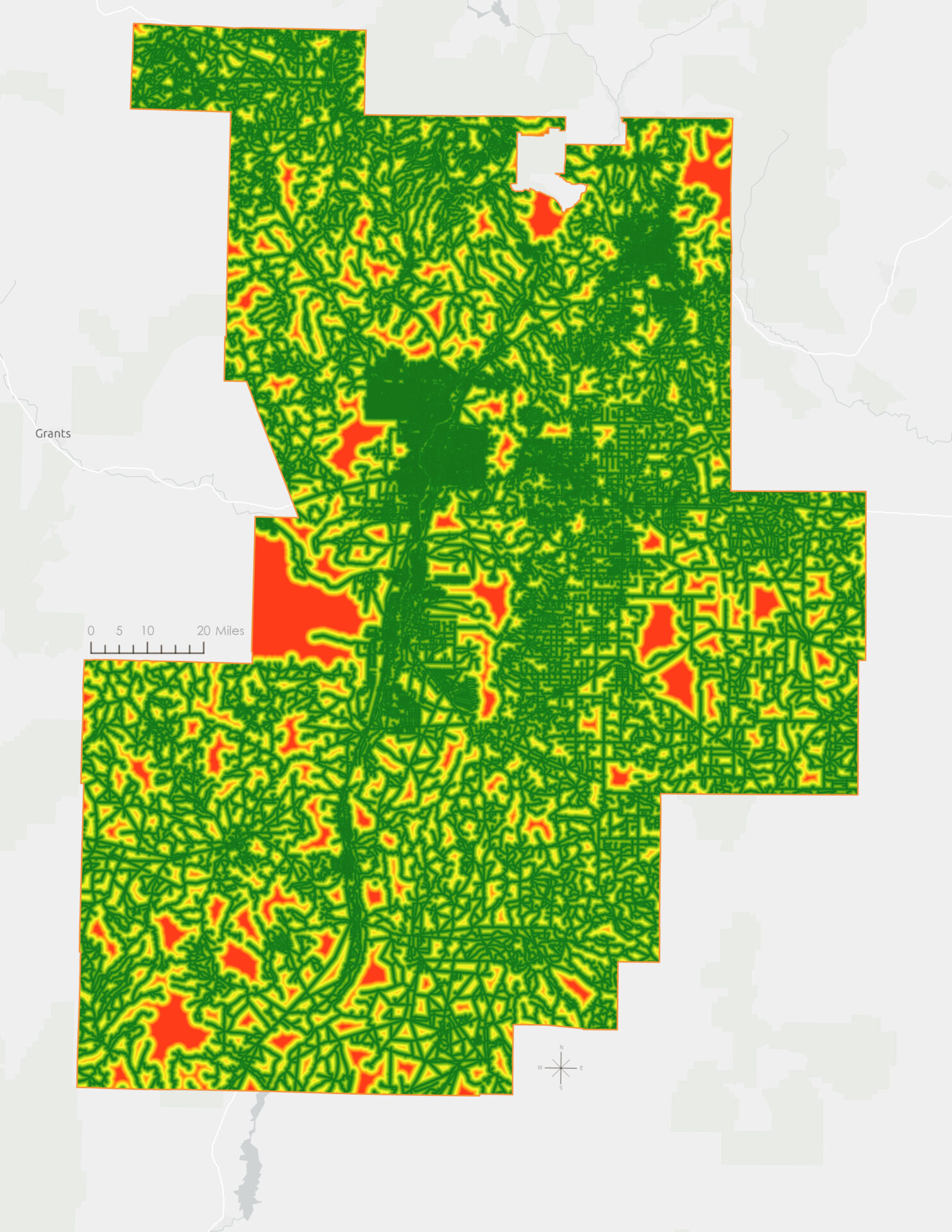
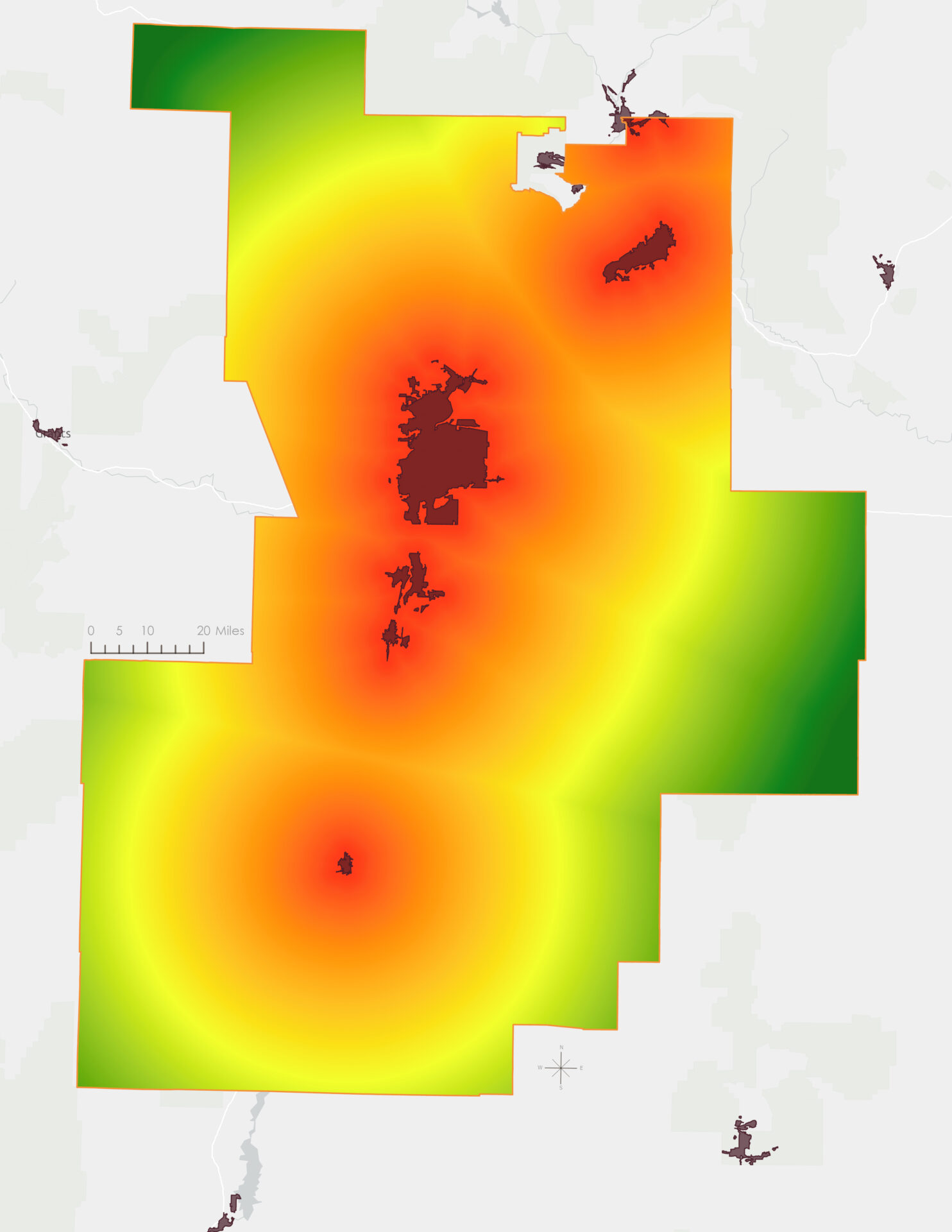
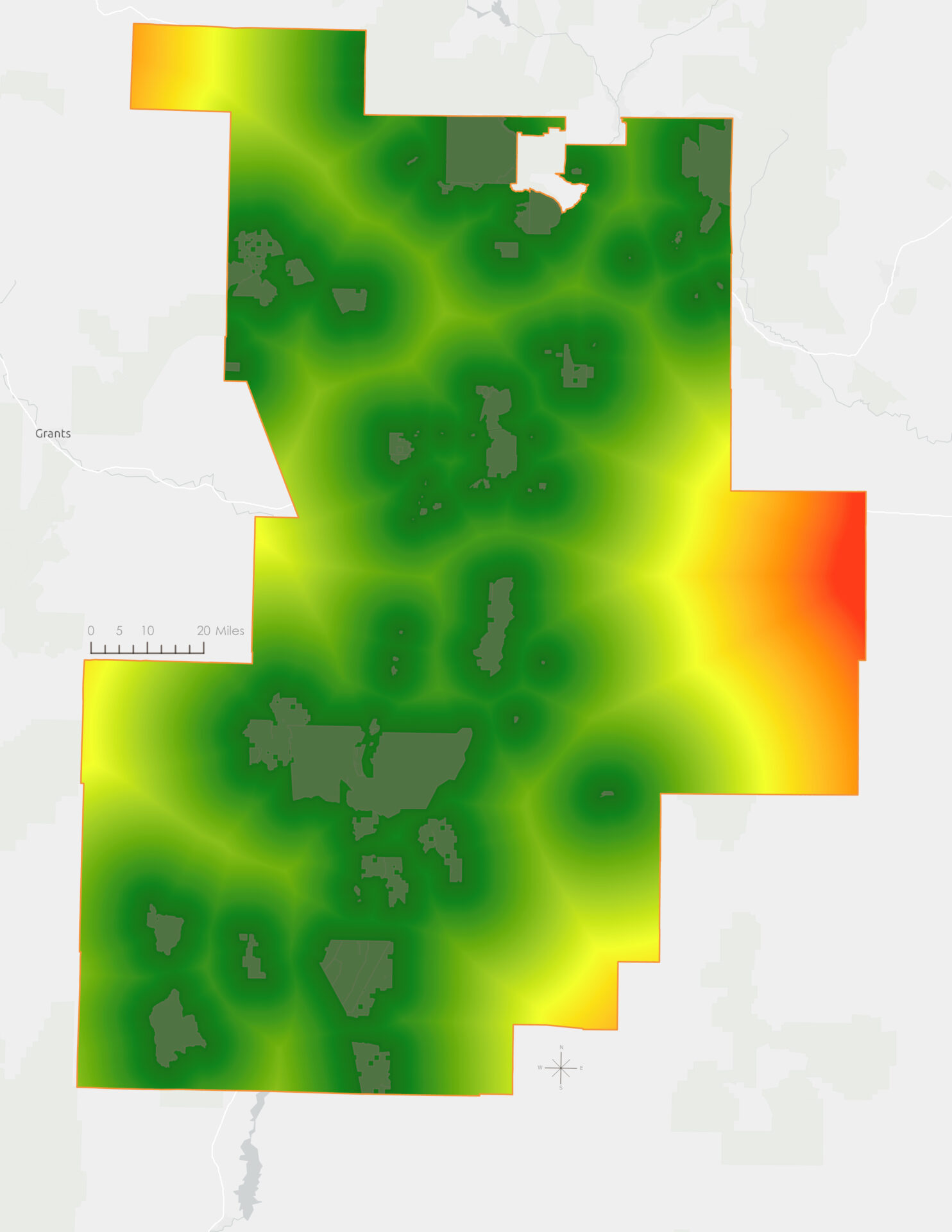
Extract and standardize the criteria to a common scale
To make each layer comparable, the five criteria were standardized to a 1–10 suitability scale based on what conditions were most favorable for siting a raptor rehabilitation center.
- Lower slopes and open habitats such as grassland and scrub were considered highly suitable, while steep terrain, wetlands, or developed areas were scored low.
- Proximity to roads and distance from urban areas were both prioritized for balance: close enough for access, but far enough to reduce noise and disturbance.
- Areas near protected lands received modest weight as a conservation alignment factor.
Weight and combine the criteria into a suitability layer
The standardized rasters were then combined using a weighted overlay formula that emphasized land cover and slope as the most influential criteria, producing the following composite suitability surface:

To refine site selection, the composite suitability raster was smoothed using Focal Statistics to calculate the mean suitability score within a 30 cell (~90m radius) circular neighborhood. From that, only areas with an average score of 9 or higher were retained.
To ensure the candidate areas were large enough to support rehabilitation infrastructure, the Region Group tool was used to identify contiguous zones of high suitability. These regions were then filtered to retain only those at least 20 acres in size.
Select suitable raptor rehabilitation center locations
After applying the suitability model and filtering for large, high-scoring regions, the final map highlighted three proposed locations that meet all core criteria:

These top candidates represent the most viable areas for development of a raptor rehabilitation center based on ecological, spatial, and logistical factors.
Conclusion and future work
This analysis identified clusters of suitable land for siting a raptor rehabilitation center in central New Mexico. These regions reflect a balance of ecological suitability, buildable terrain, and reduced human disturbance.
Given more time, I would look into integrating parcel data to identify land holdings that intersect with high-scoring areas. This would help highlight opportunities where contiguous, developable land is under single ownership to determine feasibility for acquisition or long-term use.
Software and tools
This analysis was conducted using ArcGIS Pro 3.5.2, with an emphasis on the Spatial Analyst extension, and Google Earth Engine (GEE) for remote sensing data access and pre-processing. The workflow was adapted from coursework in Raster Spatial Analysis.
Raster processing and suitability modeling were performed in ArcGIS Pro using ModelBuilder. All spatial data were downloaded in June 2025 and projected to NAD 1983 UTM Zone 13N prior to analysis.
Citations
Esri. PAD-US Protection Status by GAP Status Code [Data set]. ArcGIS Online. https://www.arcgis.com/home/item.html?id=98fce3fb0c8241ce8847e9f7d0d212e9.
Esri. Site a sustainable shrimp farm [Tutorial]. Learn ArcGIS. https://learn.arcgis.com/en/projects/site-a-sustainable-shrimp-farm/.
Esri. United States County Boundaries [Data set]. ArcGIS Online. https://uagis.maps.arcgis.com/home/item.html?id=36a7fa832aea4b7e8266a8d983afa4ac.
Esri. USA NLCD Land Cover [Data set]. ArcGIS Online. https://www.arcgis.com/home/item.html?id=3ccf118ed80748909eb85c6d262b426f.
European Space Agency (ESA). (2015). COPERNICUS/S2_SR_HARMONIZED: Harmonized Sentinel-2 MSI: MultiSpectral Instrument, Level-2A (Surface Reflectance) [Data set]. Google Earth Engine. https://developers.google.com/earth-engine/datasets/catalog/COPERNICUS_S2_SR_HARMONIZED.
Llewellyn, P. J., & Brain, P. F. (1984). Guidelines for the rehabilitation of injured raptors. International Zoo Yearbook, 23(1), 121–125. https://doi.org/10.1111/j.1748-1090.1984.tb03016.x.
U.S. Census Bureau. 2024 TIGER/Line Shapefiles: Roads [Data set]. https://www.census.gov/cgi-bin/geo/shapefiles/index.php?year=2024&layergroup=Roads.
U.S. Census Bureau. 2024 TIGER/Line Shapefiles: Urban Areas [Data set]. https://www.census.gov/cgi-bin/geo/shapefiles/index.php?year=2024&layergroup=Urban+Areas.
U.S. Geological Survey (USGS). USGS/3DEP/10m: 3D Elevation Program (3DEP) 1/3 arc-second (~10m) Digital Elevation Model [Data set]. Google Earth Engine. https://developers.google.com/earth-engine/datasets/catalog/USGS_3DEP_10m.